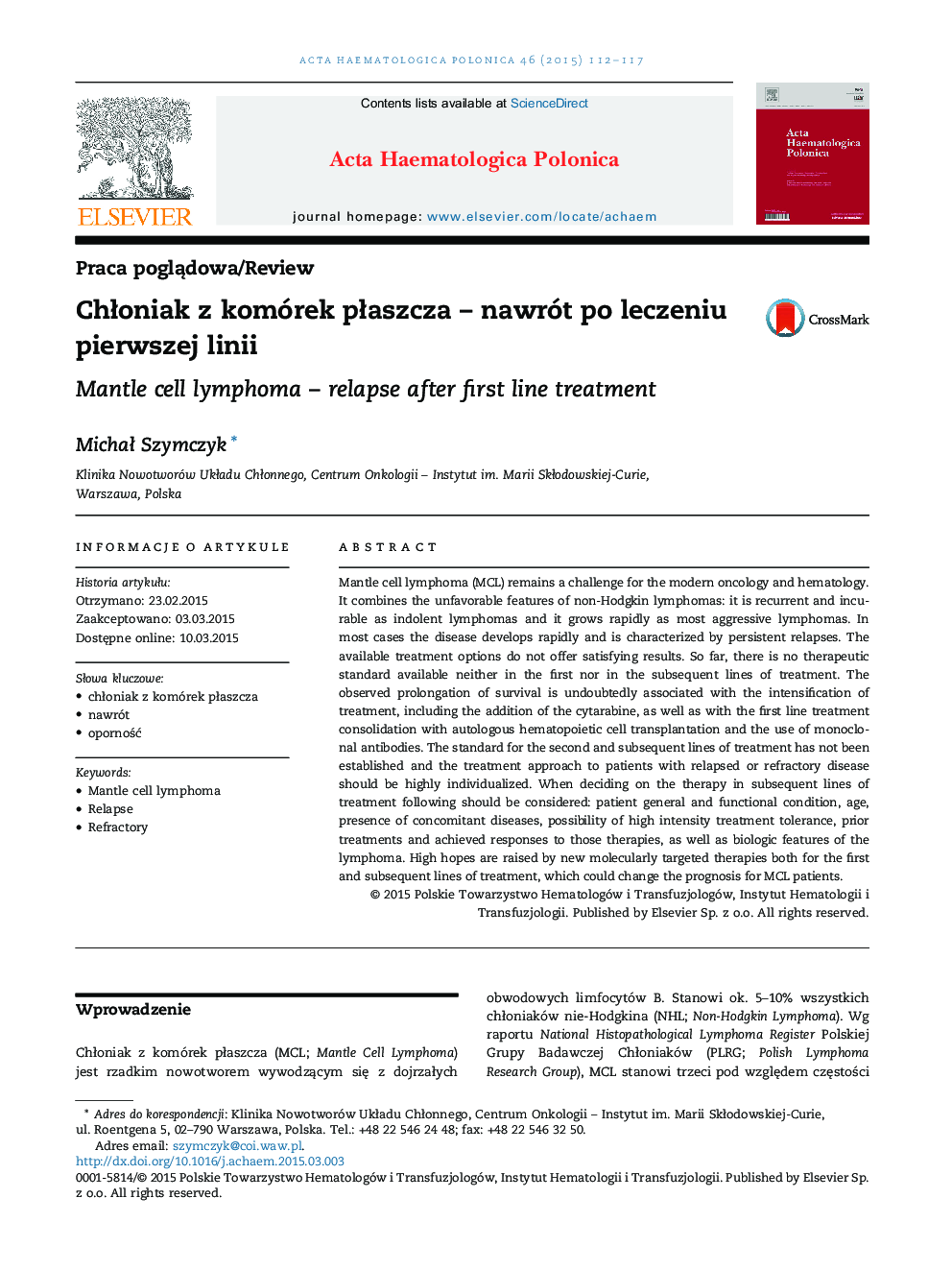| Article ID | Journal | Published Year | Pages | File Type |
|---|---|---|---|---|
| 3328113 | Acta Haematologica Polonica | 2015 | 6 Pages |
Mantle cell lymphoma (MCL) remains a challenge for the modern oncology and hematology. It combines the unfavorable features of non-Hodgkin lymphomas: it is recurrent and incurable as indolent lymphomas and it grows rapidly as most aggressive lymphomas. In most cases the disease develops rapidly and is characterized by persistent relapses. The available treatment options do not offer satisfying results. So far, there is no therapeutic standard available neither in the first nor in the subsequent lines of treatment. The observed prolongation of survival is undoubtedly associated with the intensification of treatment, including the addition of the cytarabine, as well as with the first line treatment consolidation with autologous hematopoietic cell transplantation and the use of monoclonal antibodies. The standard for the second and subsequent lines of treatment has not been established and the treatment approach to patients with relapsed or refractory disease should be highly individualized. When deciding on the therapy in subsequent lines of treatment following should be considered: patient general and functional condition, age, presence of concomitant diseases, possibility of high intensity treatment tolerance, prior treatments and achieved responses to those therapies, as well as biologic features of the lymphoma. High hopes are raised by new molecularly targeted therapies both for the first and subsequent lines of treatment, which could change the prognosis for MCL patients.
